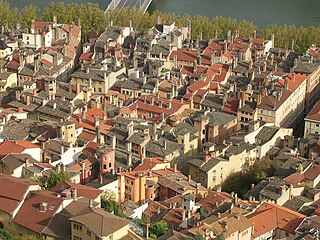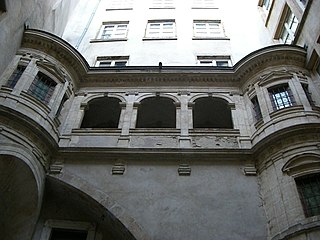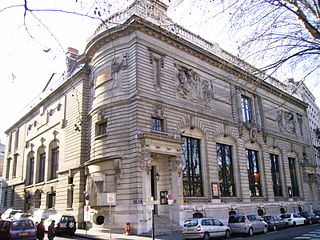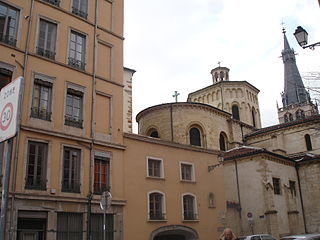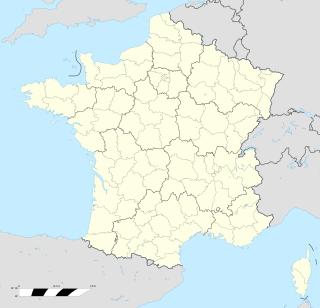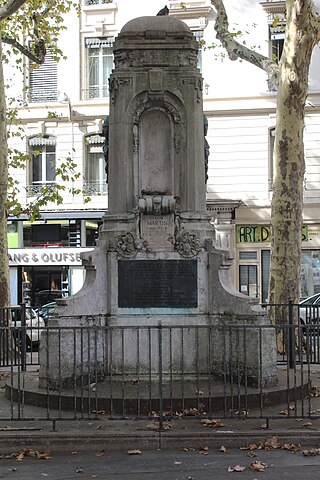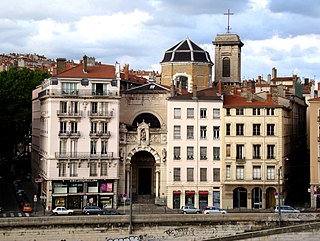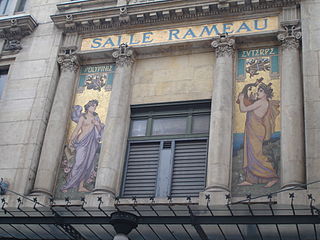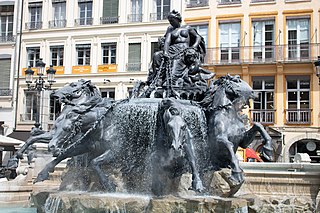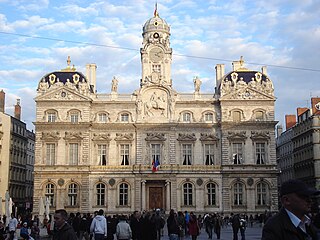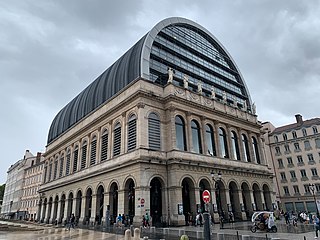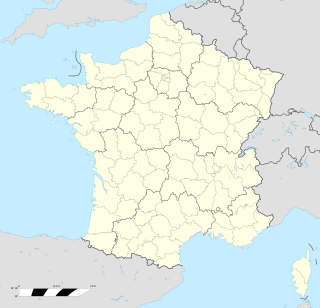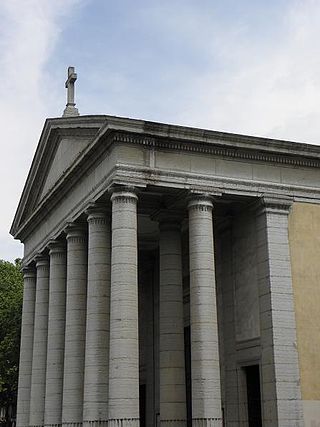Self-guided Sightseeing Tour #1 in Lyon, France
Legend
Guided Free Walking Tours
Book free guided walking tours in Lyon.
Guided Sightseeing Tours
Book guided sightseeing tours and activities in Lyon.
Tour Facts
3.8 km
170 m
Experience Lyon in France in a whole new way with our free self-guided sightseeing tour. This site not only offers you practical information and insider tips, but also a rich variety of activities and sights you shouldn't miss. Whether you love art and culture, want to explore historical sites or simply want to experience the vibrant atmosphere of a lively city - you'll find everything you need for your personal adventure here.
Activities in LyonIndividual Sights in LyonSight 1: Historic Site of Lyon
Vieux Lyon is the largest Renaissance district of Lyon. In 1964, Vieux-Lyon, the city's oldest district, became the first site in France to be protected under the Malraux law to protect France's cultural sites. Covering an area of 424 hectares between the Fourvière hill and the river Saône, it is one of Europe's most extensive Renaissance neighborhoods. There are three distinct sections: Saint Jean, Saint Paul and Saint Georges. In 1998, Vieux Lyon was inscribed on the UNESCO World Heritage List along with other districts in Lyon because of its historical importance and architecture.
Sight 2: Hôtel Bullioud
The Hotel Bullioud is a private mansion on the rue Juiverie in Lyon. He is known for the gallery of Philibert Delorme built following his trip to Italy (1536). Its decoration is one of the first experiments in France with the Renaissance style.
Sight 3: Salle Molière
The Salle Molière is a municipal concert hall in the 5th arrondissement of Lyon located in the Palais Bondy, in the Saint-Paul district, on the Quai de Bondy, on the right bank of the Saône.
Sight 4: Église Saint-Paul
The Église Saint-Paul is a Roman Catholic church located in Lyon, France. It is situated in the Vieux Lyon, in the Saint-Paul quarter, in the 5th arrondissement of Lyon. The cathedral is in the Romanesque and Gothic architectural styles. The tower-lantern was classified as monument historique in 1920, and the whole church was classified in 1996. In 2002, the church was completely renovated. It is around 45 m long and 16.5 m high under the arch.
Sight 5: La fresque des Lyonnais
The Fresque des Lyonnais is an 800 m2 mural located in Lyon, France. It depicts twenty-four historical figures from Lyon and six contemporary figures. It was created in 1994-1995 by CitéCréation.
Sight 6: Monument aux Grands Hommes de La Martinière
The Monument to the Great Men of La Martinière is a monument located on Place Gabriel-Rambaud in the 1st arrondissement of Lyon, inaugurated on December 10, 1911.
Sight 7: Église Notre-Dame-Saint-Vincent
The Église Notre Dame Saint-Vincent is a Roman Catholic church located in Lyon, on the banks of the Saône, quai Saint-Vincent, in the 1st arrondissement of Lyon. In 1984, it was classified as monument historique.
Sight 8: Tag La Baguetterie
The list of painted walls in Lyon is a non-exhaustive list of exterior murals in the Rhône department and the metropolis of Lyon. In everyday language, these "painted walls" are also called trompe-l'oeil or fresco.
Sight 9: Salle Rameau
The Salle Rameau is a municipal hall located in the 1st arrondissement of Lyon, in the Terreaux district, rue de la Martinière.
Sight 10: Fontaine Bartholdi
The Fontaine Bartholdi is a fountain sculpted by Frédéric Auguste Bartholdi and realised in 1889 by Gaget & Gautier. It was erected at the Place des Terreaux, in the 1st arrondissement of Lyon, in September 1892.
Sight 11: Démocrite méditant sur le siège de l'âme
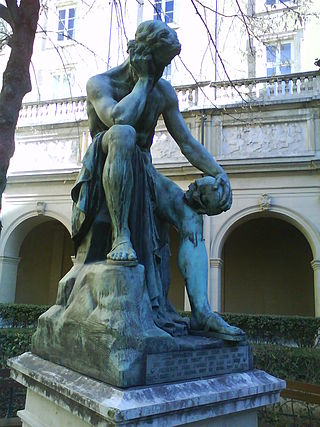
Democritus Meditating on the Seat of the Soul is a statue by Léon-Alexandre Delhomme (1841–1895), exhibited at the Paris Salon of 1868. It shows the Greek philosopher Democritus, his eyes fixed on a skull he holds in his hands. It is now exhibited in the garden of the Musée des Beaux-Arts de Lyon.
Wikipedia: Democritus Meditating on the Seat of the Soul (EN)
Sight 12: Musée des Beaux-Arts de Lyon
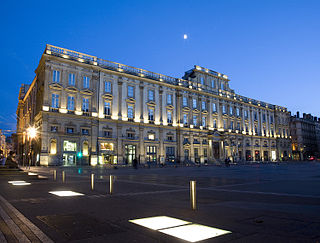
The Museum of Fine Arts of Lyon is a municipal museum of fine arts in the French city of Lyon. Located near the Place des Terreaux, it is housed in a former Benedictine convent which was active during the 17th and 18th centuries. It was restored between 1988, and 1998, remaining open to visitors throughout this time despite the ongoing restoration works. Its collections range from ancient Egyptian antiquities to the Modern art period, making the museum one of the most important in Europe. It also hosts important exhibitions of art, for example the exhibitions of works by Georges Braque and Henri Laurens in the second half of 2005, and another on the work of Théodore Géricault from April to July 2006. It is one of the largest art museums in France.
Sight 13: Jardin du Palais Saint-Pierre
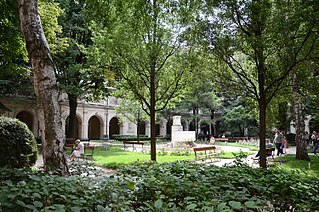
The garden of the Palais Saint-Pierre is a municipal garden in Lyon located within the walls of the Musée des Beaux-Arts de Lyon. It is part of a rectangle delimited by the arcades of the former cloister of the Benedictine abbey. Of regular style, it consists of lawns in half-moons or rectangulars, punctuated by vegetation and various sculptures. It is located in the city center on the peninsula. Like the Museum of Fine Arts, the garden is open every day, except Tuesdays and public holidays, from 10 a.m. to 6 p.m., and Fridays from 10:30 a.m. to 6 p.m.
Sight 14: Hôtel de ville
Get Ticket*The Hôtel de Ville is the city hall of Lyon, France, and one of the largest historic buildings in the city. The building is located between the Place des Terreaux and the Place de la Comédie, in front of the Opéra Nouvel. It was designated a monument historique by the French government in 1886.
Sight 15: Opéra de Lyon
The Opéra Nouvel in Lyon, France, is the home of the Opéra National de Lyon. The original opera house was re-designed by the distinguished French architect, Jean Nouvel between 1985 and 1993 in association with the agency of scenography dUCKS scéno and the acoustician Peutz. Serge Dorny was appointed general director in 2003.
Sight 16: Le Patineur
The Skater, or The Man of the Future or the Man of Freedom, is a sculpture by French artist César Baldaccini made in 1989. It has been located since 1992 on Place Tolozan, in the 1st arrondissement of Lyon, France.
Sight 17: Église Saint-Pothin
The Église Saint-Pothin is a Roman Catholic church located in Lyon, France. The parish church sits on the left bank of the Rhône, in the 6th arrondissement of Lyon, at the Place Edgar Quinet. By order of 2 May 2007, the whole church was included in the supplementary inventory of monuments historiques.
Share
How likely are you to recommend us?
Disclaimer Please be aware of your surroundings and do not enter private property. We are not liable for any damages that occur during the tours.
GPX-Download For navigation apps and GPS devices you can download the tour as a GPX file.
